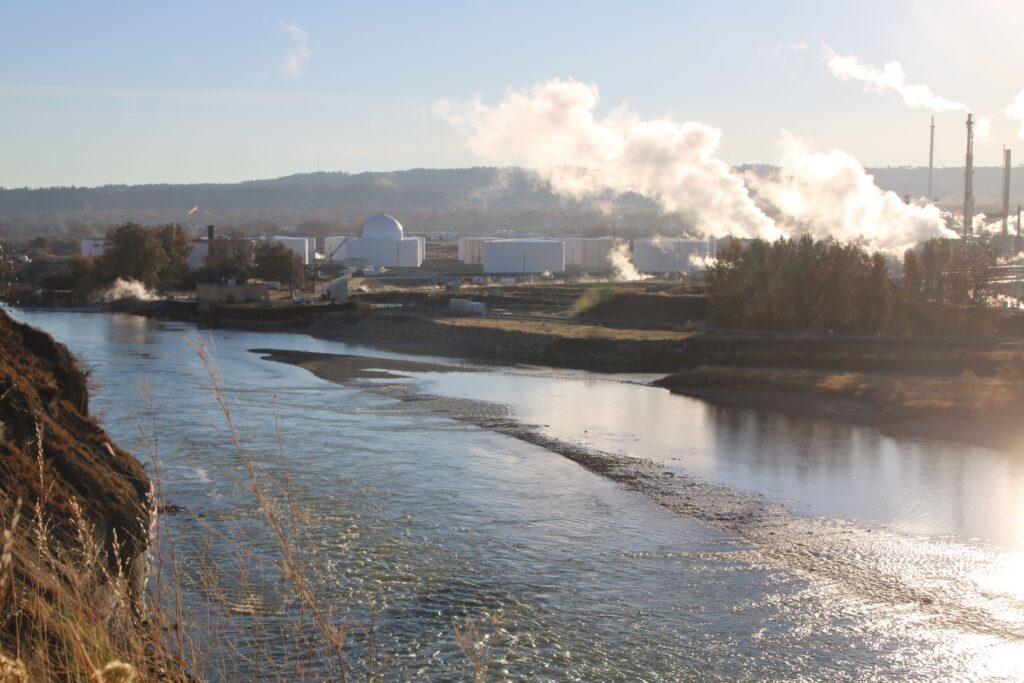|
Getting your Trinity Audio player ready...
|
The television show “Yellowstone” has put a spotlight on Montana and the iconic Yellowstone River, renowned for its spectacular beauty as it cascades through the Grand Canyon of the Yellowstone in Yellowstone National Park. Once it emerges onto the plains, the river provides much needed water for farmers and ranchers. It supplies essential habitat for Montana’s native fish, and serves as the primary source of drinking water for Billings, Montana, the state’s largest city, and several neighboring communities.
This vital source of clean water is at risk from vast amounts of industrial pollution released by a number of oil and gas refineries, which discharge large volumes of wastewater containing arsenic, hydrogen sulfide and other toxic pollutants. Two of these refineries, the CHS and Par Montana refineries, are among the top sources of toxic pollution in Montana, according to the latest U.S. Environmental Protection Agency’s toxic release inventory.
The Montana Department of Environmental Quality (DEQ), the state agency that regulates industrial facilities, is in the process of renewing the discharge permits for the CHS and Par Montana refineries. Earthworks and our conservation partners are working to prevent the agency from giving the green light to permit conditions that would allow unacceptably high levels of arsenic and other harmful pollution into the river. Here’s a quick overview:
CHS Refinery
In 2022, DEQ issued a draft renewal permit for public comment for the CHS Refinery in Laurel, Montana. Earthworks, the Montana Environmental Information Center (MEIC) and the Western Environmental Law Center (WELC) submitted extensive comments, expressing concern about the amount of arsenic and hydrogen sulfide that the permit would allow the refinery to discharge into the river, and the delayed timeframe for meeting arsenic limits established to protect public health.
We also expressed concern about the results of the refinery’s toxicity test, known as the Whole Effluent Toxicity (WET) test. It sounds complicated, but it’s simply a test to determine whether the combination of all the various types of pollution in the refinery’s wastewater are harmful to fish and other aquatic life. The test is done by exposing small fish (minnows) and other aquatic life (daphnia) to the refinery’s wastewater to see if they die from exposure to the pollution.
According to DEQ, “beginning in 2021, CHS had multiple WET failures and is currently undertaking a Toxicity Identification Evaluation/Toxicity Reduction Evaluation…” Despite these toxicity test failures, DEQ approved the permit even though CHS had not identified the reason for these failures or developed a solution.
Even with these unacceptably lenient permit conditions, CHS appealed the permit to the Board of Environmental Review (BER), which has oversight of DEQ. It asked for even more lenient terms for discharging hydrogen sulfide, a highly toxic pollutant. Earthworks and MEIC, represented by WELC, intervened in the BER case to urge the Board to reject the company’s attempts to weaken the permit further. Ultimately, CHS agreed to the permit limits imposed for hydrogen sulfide, and entered into a settlement with DEQ that the BER approved in July 2024.
Despite this decision, the renewal permit is still unacceptable, and the refinery’s discharges continue to fail the toxicity test. According to a 2024 letter sent to DEQ, CHS reported that for the first quarter of 2024, “CHS confirms that WET test results were reported as failed.”
In April, 2024, Earthworks, MEIC and WELC filed a complaint in State District Court challenging the harmful permit conditions. We’ve asked the court to determine that the permit is unlawful because it does not ensure that the refinery will operate in compliance with water quality standards (including the WET test), and because it would authorize a three-year compliance schedule for the refinery to comply with arsenic standards.
Par Montana Refinery

Meanwhile, Earthworks and our partners have also tackled the draft renewal permit for the Par Montana Refinery. We submitted lengthy comments to DEQ after the permit was released for public review. We raised concerns about permit limits for toxic pollutants, temperature and other harmful conditions, and we asked DEQ to require a revised application with permit limits that better protect the Yellowstone River and downstream water users. A final decision is pending, and the permit has been administratively extended past its expiration date for nearly a decade.
Ultimately, our goal is to ensure that the discharge permits for these refineries adequately protect clean water, public health and provide for a healthy Yellowstone River for generations to come. If you would like to get regular updates on these and other activities to protect communities and the environment, please join our email list.
